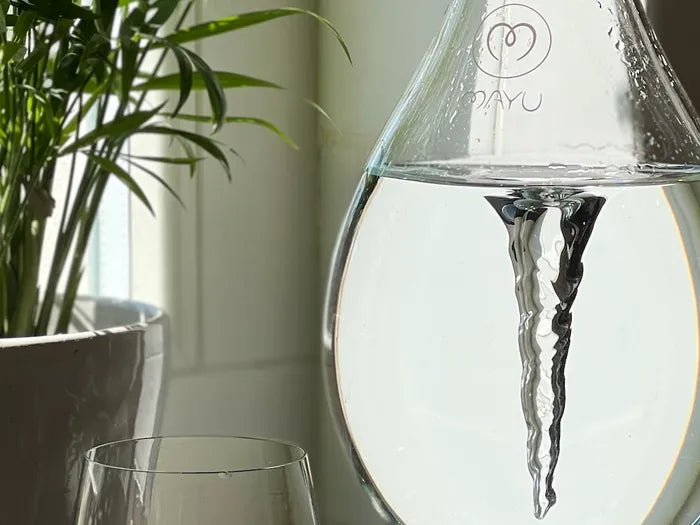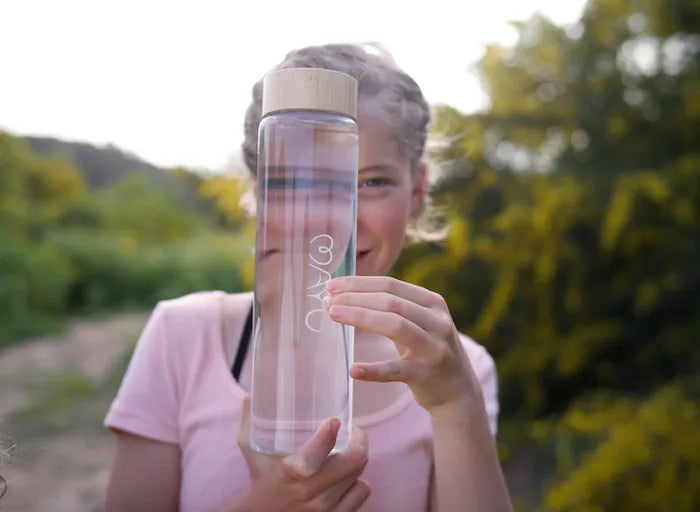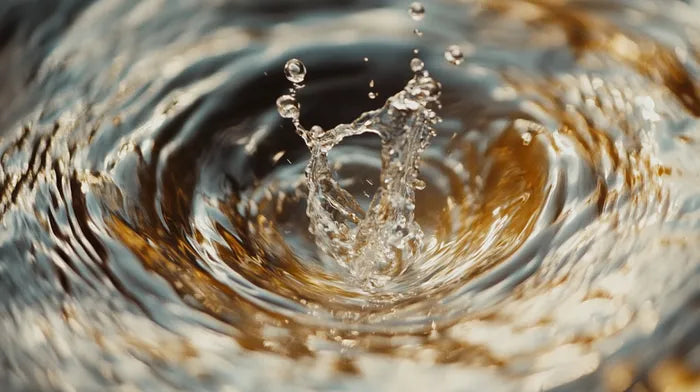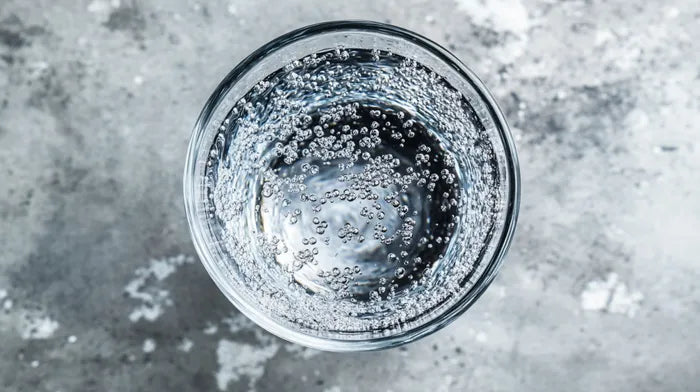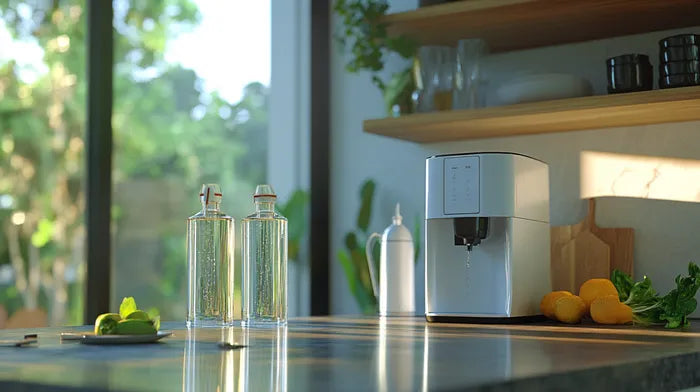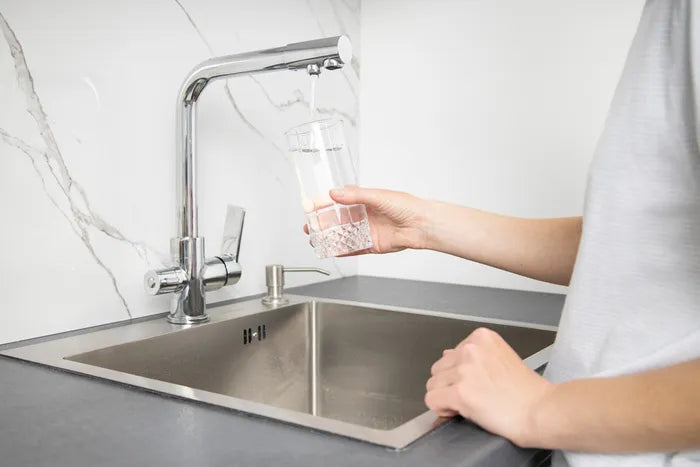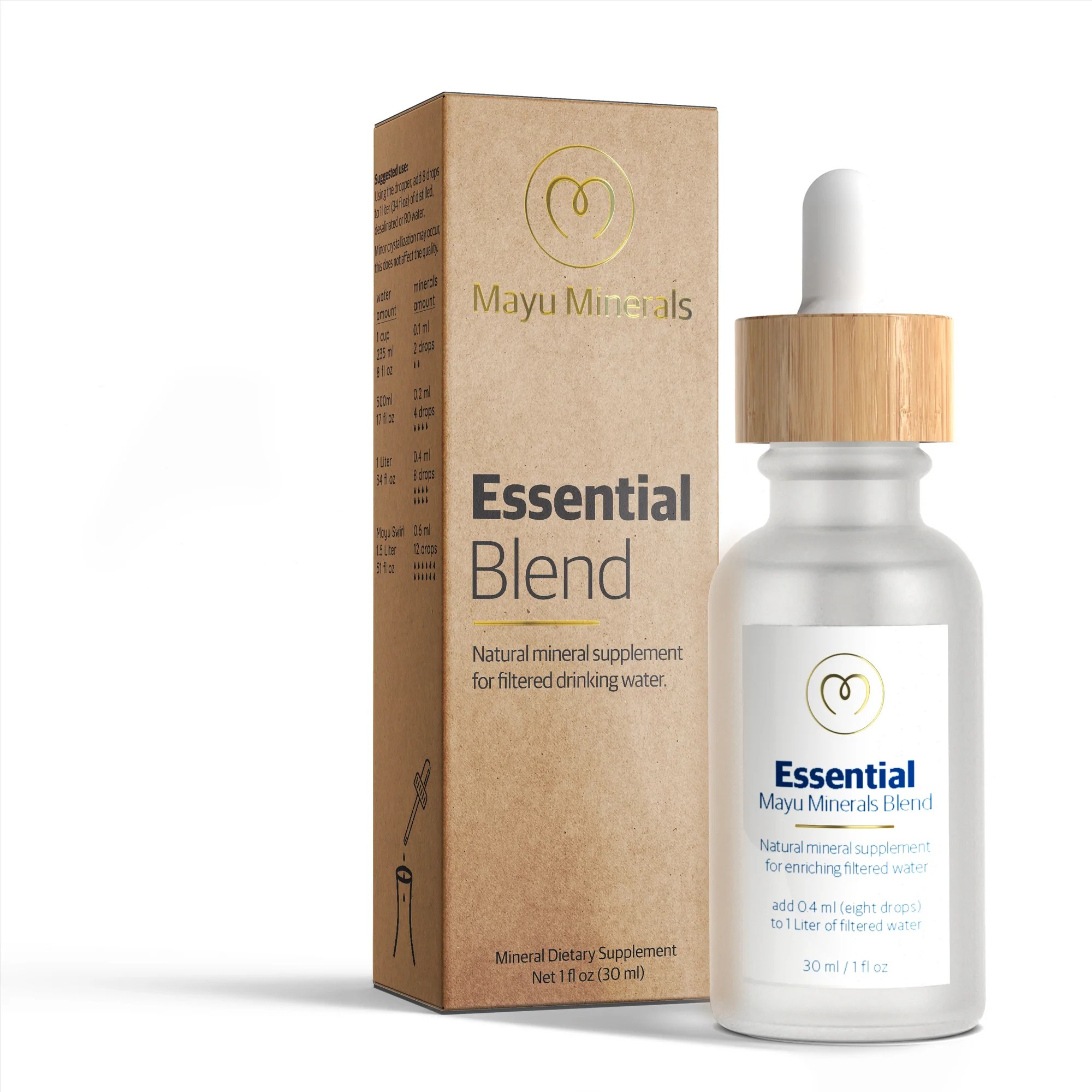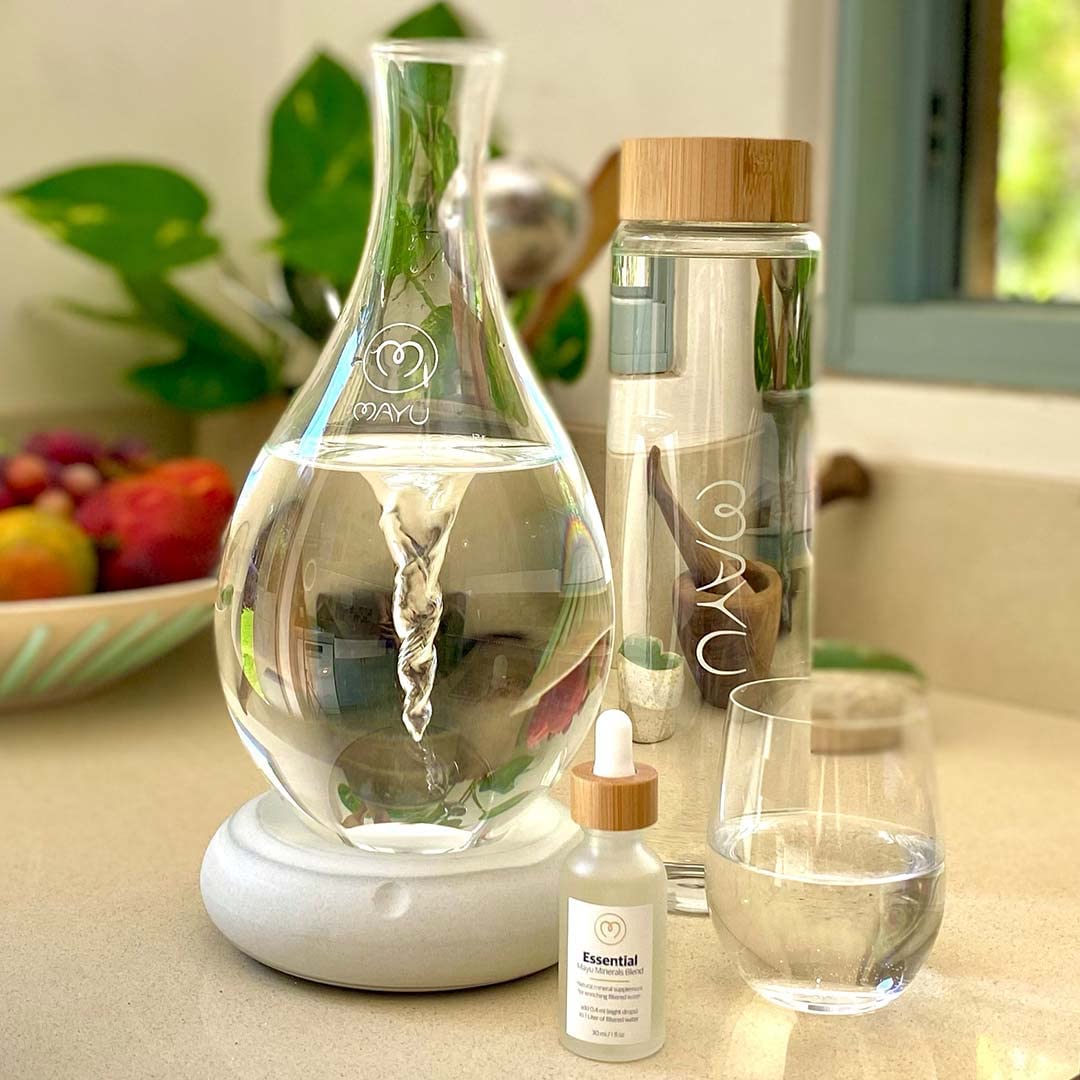Reverse Osmosis vs. Carbon Water Filter: Which Is the Best?
Explore the science behind reverse osmosis and carbon filtration to make an informed decision about your family's water.
Updated March 24, 2025

The battle for counter space under your kitchen sink often comes down to two contenders: reverse osmosis and carbon filtration systems. While both promise cleaner, better-tasting water, choosing between these purification methods isn't as straightforward as it might seem.
Each brings its own set of strengths—and compromises—to your tap. Find out which best meets your needs.
» Experience the pure taste of filtered water enhanced with essential minerals
What is Reverse Osmosis?
Reverse osmosis (RO) systems purify water by removing a broad spectrum of contaminants, from dissolved solids and heavy metals to microorganisms.
Studies confirm their effectiveness, demonstrating the removal of up to 99% of dissolved salts, particles, bacteria, proteins, dyes, and other impurities. This makes RO one of the most comprehensive home filtration methods available.
Advantages of Reverse Osmosis
Contaminant Removal: RO systems remove a wide range of contaminants, including dissolved solids, heavy metals, microorganisms, and nearly all dissolved salts, particles, bacteria, proteins, dyes, and other impurities. They also remove problematic contaminants like arsenic that can't be eliminated by other means
- Water Softening: The semipermeable filter membrane removes hardness minerals. It has tiny pores that allow water molecules to pass through, but block larger molecules like calcium and magnesium ions. This results in softened water with fewer minerals.
- Reliable Performance: RO systems provide a consistent and reliable performance over time. They need minimal maintenance beyond regular filter changes. Once installed, they can produce clean water for years with proper upkeep.
- Dependable Long-Term Solution: Due to their long-term reliability and minimal maintenance needs, RO systems offer a dependable solution for water purification.
» Learn the health benefits of reverse osmosis water
Drawbacks of Reverse Osmosis
- Water Loss: RO systems can waste a significant amount of water (typically 2–4 gallons) for every gallon of purified water produced. This can increase water bills and impact the environment.
- Complex Installation: Professional installation is often required, which can be costly. Many RO systems also need adequate space and may require modifications to plumbing and countertops.
- Mineral Removal: Along with contaminants, RO systems also remove beneficial minerals, potentially affecting the taste and perceived nutritional value of the water. Some may find the resulting water slightly acidic.
» Want to avoid installation hassles? Try this countertop RO system
Understanding Activated Carbon Filters
Carbon filtration has been used for centuries, with ancient Egyptians using charcoal to purify water. Modern activated carbon filters are far more sophisticated but still rely on the same basic principle of adsorption.
The activated carbon used in these filters has been treated to create millions of tiny pores, dramatically increasing its surface area and filtering capability.
Advantages Carbon Filtration
- Taste and Odor: Carbon filters excel at removing chlorine, sediment, volatile organic compounds (VOCs), and other chemicals that negatively impact the taste and smell of water. This results in water with an improved taste and smell.
- Easy Maintenance: Replacing carbon filters is typically a simple process that most homeowners can handle themselves without needing professional help. This further contributes to their affordability and convenience.
- No Water Waste: All water that enters the filter is purified and available for use. This potentially makes them an environmentally sound choice and that might even reduce water bills.
- Effective at Removing Specific Contaminants: While not as comprehensive as RO systems, carbon filters are very effective at removing specific contaminants, including chlorine, sediment, and many VOCs.
Disadvantage of Carbon Filters
- Limited Contaminant Removal: Carbon filters are ineffective against dissolved minerals, salts, nitrates, fluoride, arsenic, and other inorganic contaminants. They won't soften hard water or reduce TDS. If these contaminants
- Requires Frequent Replacement: Filters saturate, meaning they need regular changes to maintain performance. Infrequent changes can lead to decreased effectiveness and potential release of trapped contaminants.
- Potential for Bacterial Growth: Filter media can harbor bacteria if not properly maintained. Regular replacement and sometimes disinfection are needed.
» Find out if drinking filtered water is good for your health
Is Reverse Osmosis Water Healthy?
A common concern about RO systems is their impact on water's mineral content and potential health implications. While RO water is exceptionally pure, some worry about losing beneficial minerals during the filtration process. Here's what you need to know:
- RO water is completely safe to drink and can be particularly beneficial for people with compromised immune systems or those living in areas with poor water quality. The removal of potentially harmful contaminants far outweighs any concerns about mineral loss.
- While RO systems do remove minerals from water, most people get the majority of their essential minerals from food rather than water. A balanced diet typically provides all necessary minerals, making the mineral content of drinking water less critical for overall health.
- Some modern RO systems include remineralization stages that add beneficial minerals back into the water after filtration. This can address both taste preferences and any concerns about mineral intake.
Making the Smart Choice
When it comes to removing harmful substances from your drinking water, the verdict is clear: RO is superior. While carbon filtration can improve taste and remove certain chemicals, RO systems provide a nearly impenetrable barrier against the contaminant—from dissolved solids to pollutants.
However, healthy water is about more than purification. The MAYU Full Cycle system combines the best of both worlds by incorporating structured water technology and mineral reintegration with RO filtration.
By mimicking nature's perfect water cycle and adding back essential minerals in their optimal form, the MAYU Full Cycle offers a comprehensive approach to not just water purity, but water vitality.
» Invest your health with the MAYU Full Cycle RO system
Disclaimer: The information published by MAYU Water is not a substitute for the expert knowledge, advice, and recommendations of trained professionals. We strongly recommend consulting with industry experts and primary or scientific sources before making any health, research-related, or other important decisions.












